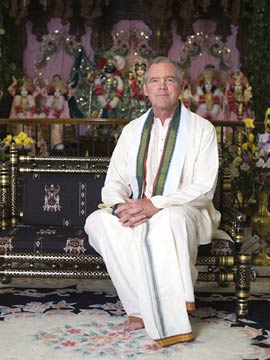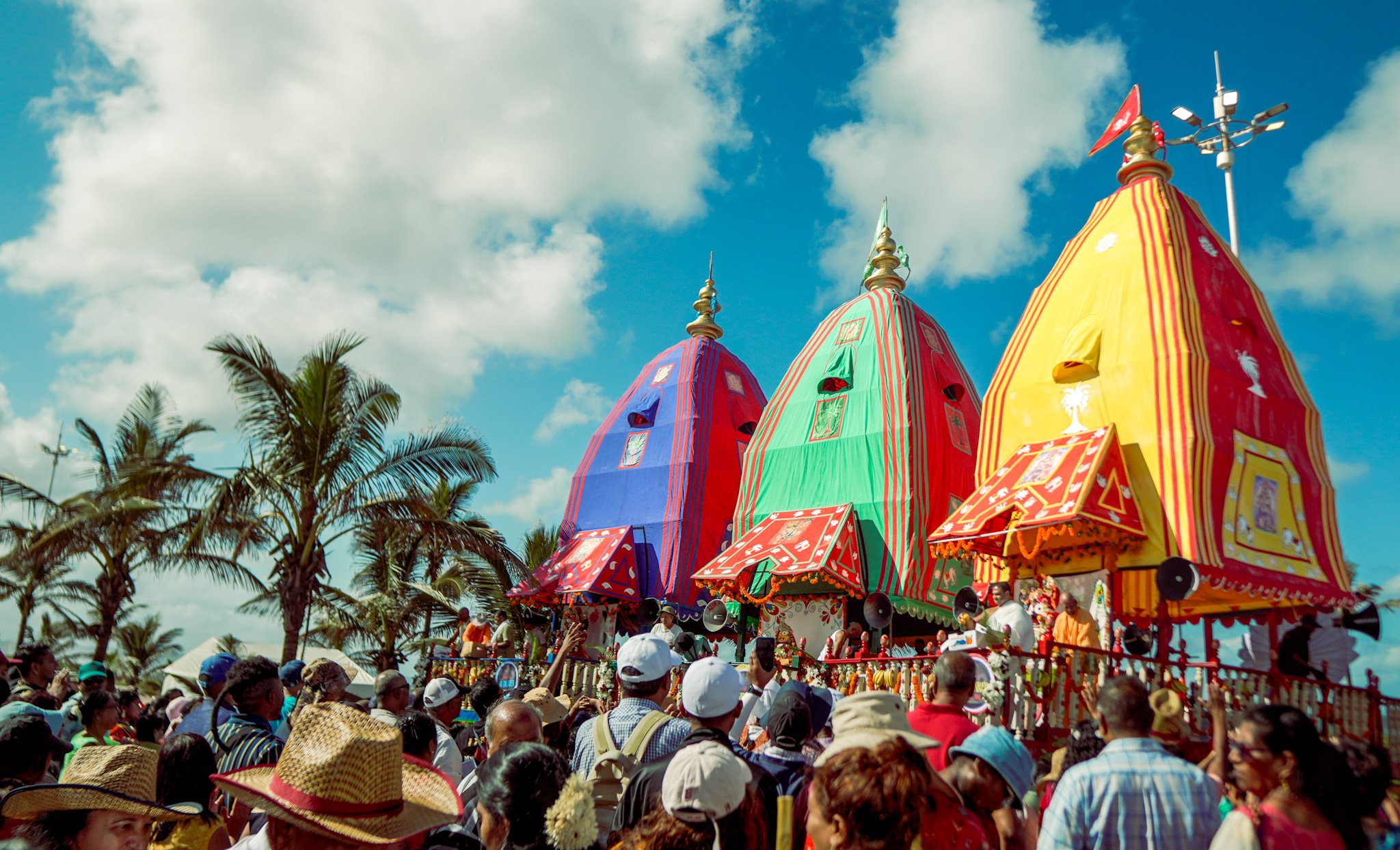Utah Temple Project Grows Roots in Mormon Country
By Arthur Pais | Mar 08, 2008

Whatever made the Hare Krishna movement build a Hindu temple in the midst of Mormon dominated Utah?
“The Lord built a temple here just to show He could do it. Caru Dasa, the president of the temple, has often said, “He did it as a prank.”
The temple is situated about 60 miles south of the Salt Lake Mormon Temple. It has been around for more than ten years, but the Hare Krishnas set up their community nearly two decades ago in the temple area.
“For a split second, you might wonder if you were in a faraway country like India,” wrote Religion and Ethics Weekly recently. “What you have here is the very first traditional Hare Krishna temple built in the USA.”
It added: “Ten years ago when the Hare Krishnas first proposed building a temple on a hill in a county which was over 95 per cent Mormon, you could imagine the overall reaction here. It could be best described as disbelief.”
“They believe in reincarnation and are vegetarians,” a Mormon leader told a local newspaper recently. “But despite their difference, Mormons discovered they and the Hare Krishnas have many values in common.”
Caru Das says many Mormon leaders supported the temple and even gave cash donations because they admired the Hare Krishna emphasis on celibacy before marriage and the eschewing of tobacco and alcohol. Those are Mormon concerns too.
Today the temple attracts thousands of non Hindus to its religious and non religious events like the annual Festival of India.
Caru Dasa is in demand in the Indian community to conduct pujas. “Strictly speaking, I should be doing only the Vaishnava pujas,” he says with a gentle laugh. “But I do all kinds of pujas including the Gayatri and Shiva Ratri pujas. For these pujas not only get money for the temple but also give me a chance to inject some thoughts about Vaishnava deities and traditions.”
Though many Mormons welcomed the small Hare Krishna congregation, how difficult was it for him when some Hare Krishna congregations faced charges of corruption and child molestation?
“It’s interesting that hardly any of that appeared in the Utah newspapers, like the Salt Lake Tribune or the Deseret News,” he says. “Though UPI and Reuters sent out the articles, for some reason the local papers did not print them. I would like to think it is because we have been so proactive in Utah and generated so much good press (eight major festivals a year for 15 years, 30,000 tours given per annum, donated thousands to New York firefighters after 9/11, more to Katrina victims, as well as to Sri Lanka after the tsunami) that they simply preferred not to.”
“That’s what I would like to believe, but it may be we got lucky,” he continued. “Even if they had printed the stories, many tens of thousands of people have been here for tours and festivals, have had a truly positive experience of us, and could assess things in perspective.”
On his blog, Caru Dasa wrote last year how Shiva Ratri is always a well attended event at the temple. “I estimate 600 people came and went during the three hour festivities,” he wrote. “There was a mix of 30 per cent Indians and 70 per cent Westerners. I noticed not only Western college age kids, but maybe 10 per cent of the crowd were older grandparents, many of whom stayed the whole time.”
He is proud of the fact that Indian Hindu families have supported the temple with passion, and there are many families that come for the festivals and the pujas year after year. “Jai Krishna, Pragna and her friends did a great job on the chanting last year which varied between Om Namo Shivaya and Hare Krishna,” he recalled. “Dinesh and Kalpana Patel attended, and gave their annual donation of $ 2,000.00, which they have done for Shiva Ratri the last three years.”
As much as many Hindus from India seek him out especially when the services are to be conducted in English or there is a need for English translation, has he felt that he may be considered an “outsider?”
“There are the ‘half full’ and the ‘half empty’ people,” he said. “The ‘half full’ people say, ‘Isn’t it wonderful that these Westerners have taken up the Bhagavad Gita and Sanatan Dharma to the point many of them have become genuine saddhus and gurus.’ The ‘half empty’ people can think only that these did not take a ‘brahmin’ birth and cannot pronounce all the Sanskrit words exactly.
“To the ‘half empty’ people who avoid ISKCON devotees, my reaction is, ‘Your loss.” I have been fortunate for the last 38 years to have had the ‘half full’ people as my dear friends, confidants, mentors, and sponsors.”
Visit www.utahkrishnas.com for more information.












